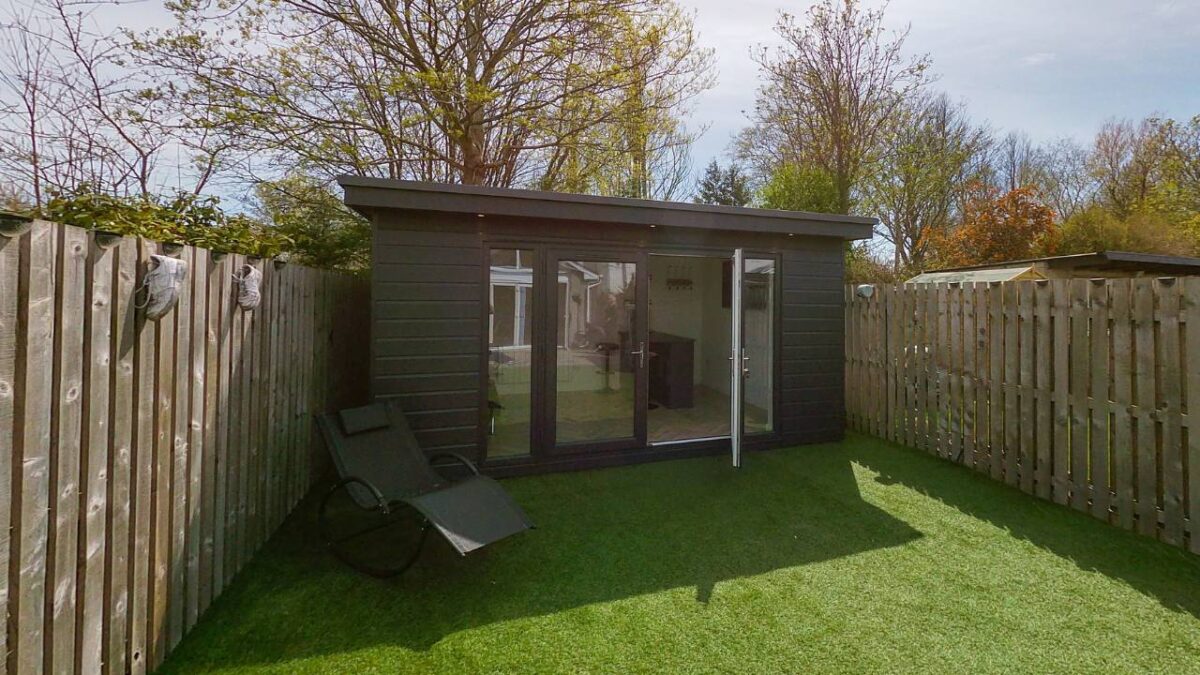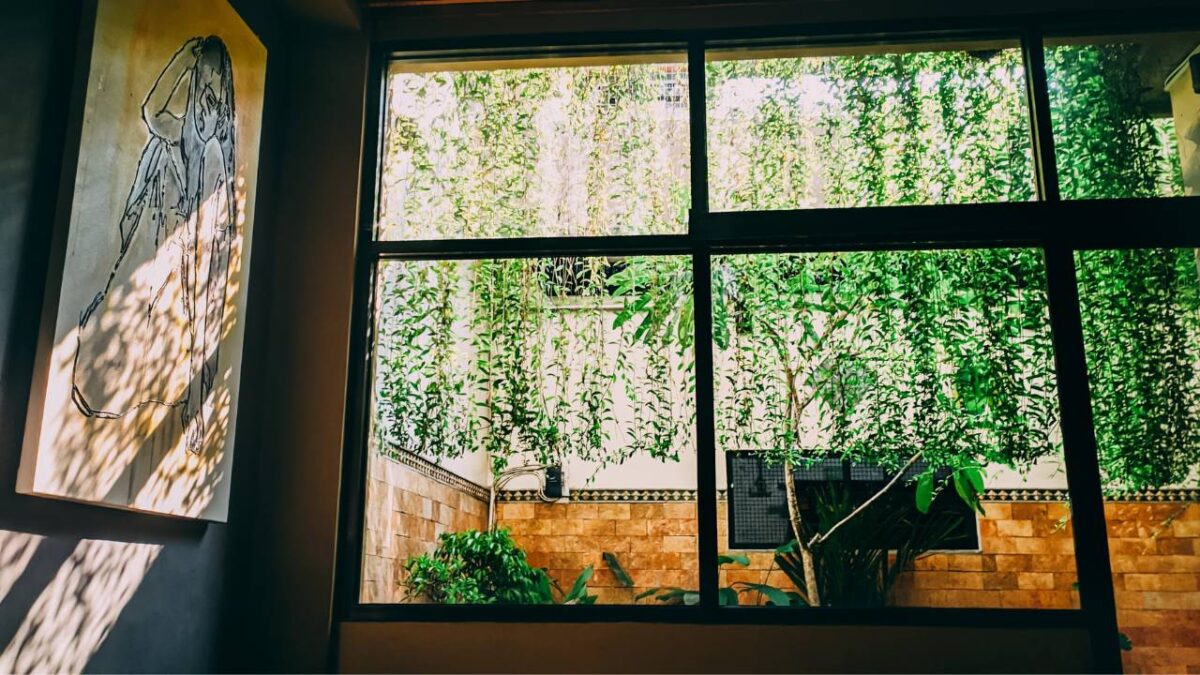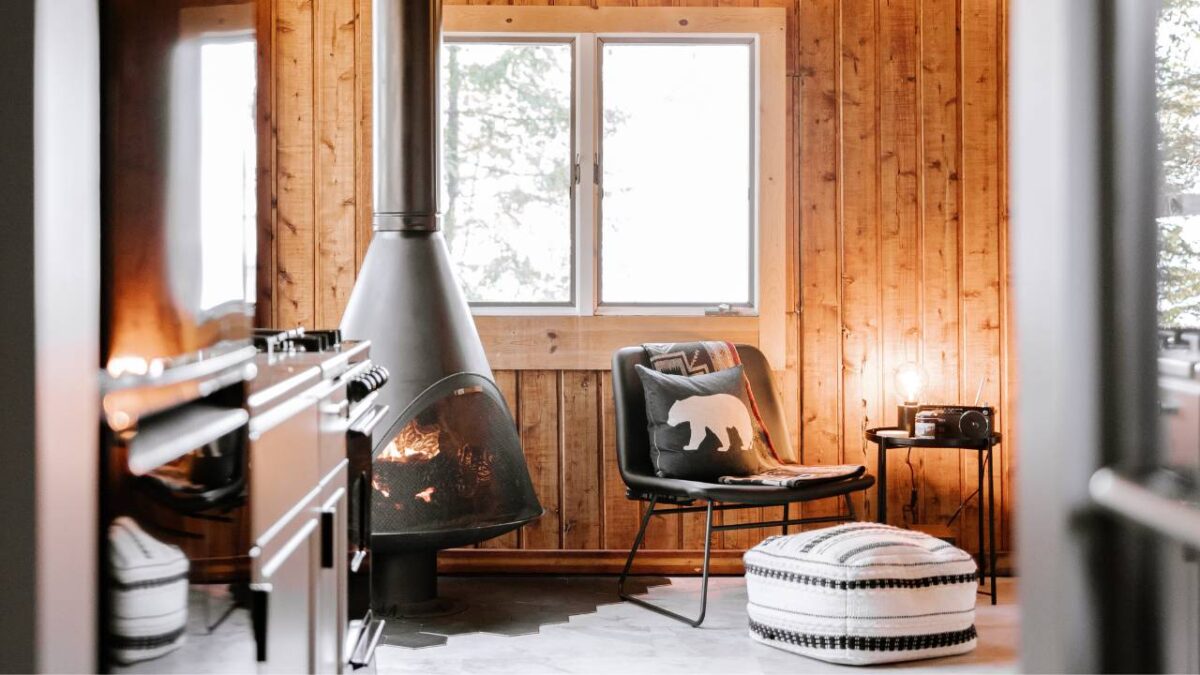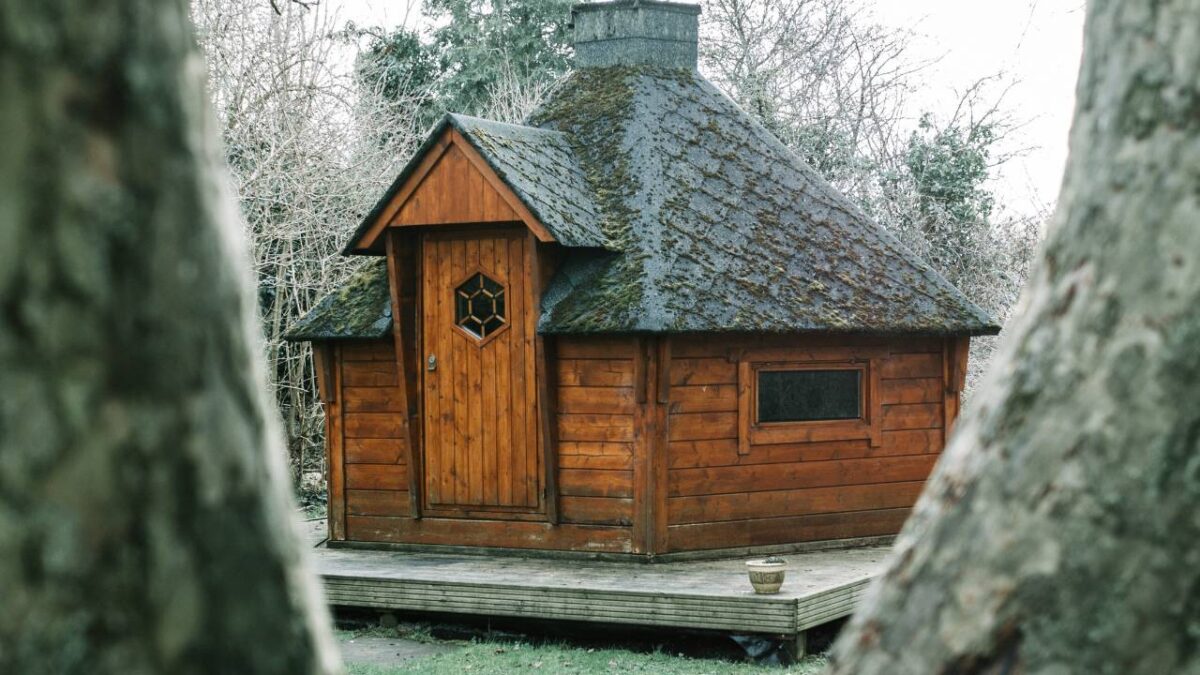Creating a beautiful garden room can provide a tranquil retreat for you to unwind right in the comfort of your own backyard. A well-designed garden room combines aesthetics and practicality, transforming your outdoor space into a stunning green haven while still being functional. With the right approach to design, your garden room will seamlessly blend with its surroundings, enhancing the overall appearance of your property.
Vision and Planning of Garden Rooms
Understanding the Purpose
Before considering garden room ideas, it is essential to understand the purpose of your garden room. Take a moment to reflect on your vision: is it a peaceful retreat, a cosy entertainment area, or a functional workspace? Identifying the key aspects of your ideal garden room will help you make practical decisions on layout, style, and features. Here are a few popular purposes for garden rooms:
- Relaxation space – a serene oasis filled with tranquil elements like water features, comfortable seating, and soothing plants
- Entertaining area – a lively spot featuring an outdoor kitchen, ample seating, and perhaps a fire pit for cooler evenings
- Workspace or hobby room – a practical zone with a sturdy work surface, storage solutions, and good lighting
Assessing Your Garden’s Potential
While envisioning your perfect garden room, it’s important to consider your garden’s potential. Make a list of your garden’s strengths and weaknesses and take note of existing features, such as:
- The size and shape of your garden
- The type of soil
- The amount of sunlight and shade available
- Any slopes, level changes, or drainage issues
The Importance of Location
Selecting the perfect location for your garden room is crucial, as it showcases your masterpiece of garden design. When selecting a spot, consider the following factors:
- Views – Aim to optimise the views from your garden room and benefit from the most visually pleasing aspects of your garden. Ensure unappealing areas are carefully screened, while interesting features and captivating vistas are showcased.
- Sun and shade – Understand your preference for sun exposure and choose a location with the appropriate balance. Shadier spots are more suitable for relaxation spaces, while sunnier areas work well for workspaces and entertaining.
- Proximity to your home – If you plan to use your garden room frequently or as an entertaining area, you might want to position it conveniently close to your home. On the other hand, if your goal is a private retreat, opt for a more secluded area.
Design Principles
Incorporating Natural Light

When designing your garden room, it’s essential to maximise the use of natural light. Not only will this make the space feel more open and airy, but it will also create a pleasant atmosphere and help you connect with the outdoors. To achieve this, consider the following:
- Using large windows or glass doors that allow an abundance of light to flow into the space.
- Positioning the garden room to make the most of the sun’s trajectory throughout the day.
- Incorporating skylights or roof lanterns for additional light sources from above.
Creating Flow with the Outdoors
Another crucial aspect of garden room design is the flow between the indoors and outdoors. The goal is to create a seamless connection, encouraging movement and interaction between the two spaces. Here are some tips to help you achieve this:
- Opt for bi-folding or sliding doors that open up the space entirely and blur the lines between inside and outside.
- Incorporate a decking or patio area just outside the garden room, extending the usable space and tying the indoors and outdoors together.
- Use materials and textures that echo the garden’s aesthetics, creating a sense of cohesion and continuity in your design.
Selecting a Cohesive Colour Palette
To create a harmonious and visually appealing garden room, it’s essential to choose a colour palette that complements both the interior and exterior of your home, as well as the natural surroundings of your garden. Consider these factors when selecting your colours:
- Opt for a neutral base that will allow you to layer additional hues and textures without overwhelming the space.
- Choose accent colours inspired by the tones found in your garden or in your home’s interior to establish consistency.
- Integrate a variety of textures and materials to add depth and interest, such as wood, stone, or natural fibres.
Selecting Materials and Structures
Wood Versus Modern Materials
When designing your garden room, one of the first decisions you’ll need to make is the choice between traditional wood and modern materials. Wood offers a classic, timeless aesthetic, blending seamlessly with nature. In contrast, modern materials like composite, aluminium or glass might bring a contemporary, minimalist appeal to your garden space.
- Wooden structures – These are versatile, sustainable, and visually warm. A wooden shed or gazebo adds charm and character to your garden. Be sure to choose timber treated for outdoor use to ensure longevity.
- Modern structures – Materials like composite, aluminium, or glass can lend your garden room a sleek and polished look. These materials often require less maintenance compared to wood, remaining resistant to rot and decay.
Innovative Extensions and Outbuilding Styles
Your garden room can either be an extension of your home or a standalone structure. Here are some popular styles to consider:
- Conservatories – These glass-heavy structures provide a seamless transition from your home to your garden, allowing you to enjoy the outdoors even in inclement weather.
- Garden offices – If you’re working from home, you have a good reason to choose a garden room for a home office. A modern, insulated structure can provide all the necessary amenities for year-round use.
- Garden studios – Ideal for creatives or hobbyists, garden studios offer a quiet and inspiring space away from the main house. They could be used as art studios, music rooms, or simply as a sanctuary for relaxation.
- Greenhouses and potting sheds – For keen gardeners, a greenhouse or potting shed is a practical choice. These structures help protect your plants from adverse weather, while allowing you to indulge in your passion for gardening all year round.
Roofing Considerations
The roof for your garden building should not only complement its overall style but also provide weatherproof protection. Here’s a quick glance at popular roofing options:
- Flat roofs – These are common for modern extensions and outbuildings. When properly constructed, flat roofs offer excellent water drainage and insulation. Bear in mind, they may require more frequent maintenance than pitched roofs.
- Pitched roofs – A classic choice for sheds, studios, and garden offices, pitched roofs can be finished with tiles, slates, or metal sheeting. They provide better ventilation and insulation, making them ideal for year-round garden buildings.
- Transparent roofs – Often used in conservatories or greenhouses, transparent roofing materials such as glass or polycarbonate panels allow an abundance of natural light to pour in while shielding your space from the elements.
Furnishing for Comfort and Utility
Choosing the Right Furniture
When it comes to designing your garden room, it’s essential to select the right furniture that meets both comfort and utility needs. Consider materials like teak or rattan for durable, attractive pieces that will withstand the elements.
- Outdoor seating – Opt for a mix of seating options, such as chairs, sofas, and benches. Add plush cushions for extra comfort and to liven up your space with a splash of colour.
- Tables – A functional eating area is an integral part of your garden room design. Choose a dining table that complements your other furniture and provides ample space for guests and family members.
Outdoor Living and Dining Areas
Creating charming outdoor living and dining areas encourages you and your guests to enjoy the beauty of your garden room. Here are a few ways to make the most of your living and dining spaces:
- Provide comfortable seating near the eating area to encourage conversation and relaxation.
- Add ambient lighting, such as string lights or lanterns, to set the mood and enhance the atmosphere during evening gatherings.
- Create distinct zones using outdoor rugs or planters to separate the living and dining areas from the rest of your garden room.
Storage Solutions
Lastly, an organised and clutter-free space is essential for a relaxed atmosphere. Including smart storage solutions helps keep your garden room tidy and inviting.
- Built-in storage – Consider adding a bench with storage underneath for cushions and other accessories. This way, you can easily put items away when not in use.
- Garden furniture – Multifunctional pieces, like a coffee table with a storage compartment or an outdoor bar cart, are practical and stylish options.
- Storage solutions for gardening tools – If you’re an avid gardener, incorporate storage for tools and supplies, such as a potting bench or a shed close to your garden room. This allows you to enjoy your gardening hobbies without taking up valuable space in your main living area.
Decor and Aesthetics
Styling with Plants and Flowers

Incorporating plants and flowers into your garden room’s design can create a serene and inviting environment. To make it visually engaging, choose plants with various heights, shapes, and colours. For instance, you could place a tall potted palm in a corner, a lovely table with a selection of succulents and trailing ferns, along with colourful flowering plants bordering the room. Mixing different species can bring life and energy to your space.
Consider these plants for your garden room:
- Tall plants – palms, bamboo, and ferns
- Medium-sized plants – rubber plants, monstera, and fiddle leaf fig
- Small plants and flowers – succulents, violet, and begonia
Textures and Fabrics
To add warmth and visual interest to your garden room, experiment with various textures and fabrics. Start by selecting outdoor furniture cushion covers in bold or subtle colours, depending on your taste. Look for materials that are durable and weather-resistant, such as Sunbrella fabric. Layer textures by adding a plush outdoor rug, decorative pillows, and a cosy throw blanket for chillier evenings.
Integrating Artistic Elements
Embellish your garden room with captivating, weather-resistant art pieces to make your space truly unique. Popular choices include sculptures, mosaic installations, and botanical prints on canvas or metal. Commission a local artist to create something bespoke to your taste or head to an art fair to find the perfect creation for your space.
Ideas for integrating artistic elements:
- Wall-mounted botanical prints
- Garden sculptures and statues
- Mosaic stepping stones or wall installations
Functional Additions
Customising for the Home Office
Working from home has become a part of our daily lives, and garden offices are the perfect solution for a quiet, comfortable workspace. When designing your garden room, consider elements that will enhance your productivity. Natural light is essential for concentration, so include large windows or skylights to make the most of the sunshine.
Organise your space with customisable furniture and storage options like adjustable work surfaces, ergonomic chairs, and shelving for books or documents. Don’t forget to incorporate regular breaks and relaxation with some cosy outdoor seating areas.
Entertainment and Leisure Spaces
A great garden room can be transformed into a home cinema. Install comfortable seating, projectors, and high-quality sound systems for an immersive movie night experience. Complement the space with a mini-bar and mood lighting to create the perfect atmosphere.
For those who enjoy hosting gatherings with friends and family, the addition of a BBQ area, pizza oven, or outdoor kitchen will elevate your garden room’s entertainment function. A well-designed garden room can easily become your personal oasis for relaxation and leisure time.
Integrating Green Technology
Your garden room doesn’t just have to look great – it can also be environmentally friendly. One way to achieve this is by installing a green roof. A green roof not only enhances your garden room’s aesthetics, but it also helps with insulation and protecting local wildlife.
Consider integrating solar panels for added sustainability and cost-saving benefits. This green technology provides energy for various garden room functions such as lighting or heating systems. By incorporating green technology, your garden room can become more self-sufficient and eco-friendly, giving you peace of mind knowing you’re making a positive impact on the environment.
Comfort through Seasons
Heating Options

A wood-burning stove is an excellent and environmentally friendly option to warm your garden room during chilly evenings. These traditional stoves not only emit a welcoming heat, but also add a cosy feature to your outdoor living space. To ensure the best heat efficiency, choose a stove with a good heat output and a built-in fan to help circulate the warmth throughout the space.
Other alternatives for heating your garden room include:
- Electric heaters – Easy to install and energy-efficient, these units offer instant warmth and often come with adjustable temperature settings.
- Gas heaters – While more expensive to run, they provide consistent, powerful heat perfect for larger outdoor spaces.
Coping with Bright Sunlight
Dealing with the strong glare and heat of the sun is essential for creating a comfortable garden room throughout the year. To protect your space from excessive sunlight, consider installing:
- Shade sails – These stylish, modern additions can be easily fixed to a building or outdoor feature. They offer an attractive means of blocking out sunlight while simultaneously allowing breezes to flow through your space.
- Pergolas – These garden structures provide both shade and aesthetic appeal, with the option to dress them with climbing plants for a natural and beautiful cooling system.
- Blinds or shades – Available in a variety of materials, including bamboo and fabric, these window coverings allow you to control the amount of sunlight entering your garden room.
Weatherproofing Outdoor Spaces
Ensuring that your outdoor spaces remain comfortable, functional and damage-free throughout all seasons requires some strategic weatherproofing. Below are some key solutions:
- Furniture covers – Invest in weather-resistant covers for your outdoor seating, tables and accessories. This will help protect them from rain, wind and harmful UV rays.
- Rugs – An outdoor rug adds an extra layer of comfort underfoot and is great for defining your garden room. Opt for a weatherproof, UV-resistant material to stand the test of time.
- Drainage – Properly planned drainage systems are essential in the garden room design, especially during heavy rainfall and in prone wet areas. Adequate drainage can help prevent water damage, damp or rot in your outdoor space.
Creating Privacy and Tranquillity
Creating a sense of tranquillity and privacy is essential for a true garden room experience. Following a few simple design principles, you can transform your outdoor space into a peaceful and serene haven.
Fencing and Natural Barriers
Fences and natural barriers play a key role in securing your garden room’s privacy. Start by considering the appropriate height and materials for your fence. Wooden panels and wrought iron gates are popular choices, depending on your aesthetic preferences.
On the other hand, natural barriers like hedges and bushes create a softer, more organic boundary. Moreover, they provide added benefits such as:
- Absorbing noise from the neighbourhood
- Attracting more wildlife to your garden
- Acting as a windbreak, creating a calm environment
Some popular plants for natural barriers are:
- Leylandii – Fast-growing and evergreen, perfect for tall hedges.
- Bamboo – A versatile option with a tropical appeal.
- Laurel – A dense, evergreen shrub for great privacy.
Private Retreats and Secluded Corners
Creating private retreats and secluded corners within your garden room can significantly enhance its tranquillity. A garden annex or a shepherd’s hut, for instance, offers a cosy space for peaceful moments of reflection.
Here are some tips for crafting secluded and serene spots in your garden:
- Use winding pathways, nestled between lush greenery, to create intimate, secluded areas.
- Consider incorporating a small, calming water feature to contribute to the ambiance.
- Use various screening elements, such as trellises covered with climbing plants, to further boost privacy and create sheltered areas.
- Opt for comfortable seating options to encourage moments of relaxation and contemplation.
Financial Planning and Regulations
Budgeting for Your Garden Room

Proper financial planning is essential for creating your dream garden room. Start by establishing a realistic budget to avoid unexpected cost overruns. Here’s a simple guide to help you set your budget:
- Determine your needs and wants – Identify the garden room’s main purpose (office, relaxation, storage, etc.), preferred size and style to estimate the cost.
- Estimate materials and labour costs – Research the prices of various building materials, such as timber, insulation and roofing, and get quotes from local contractors or suppliers.
- Include contingency funds – Add a buffer of about 10-15% for unforeseen costs and fluctuations in prices.
- Consider financing – If needed, explore financing options like personal loans or home equity loans to cover the expenses.
Remember to include any oversight costs, such as garden landscaping, interior furnishings and technology installations, in your total budget.
Understanding Local Building Regulations
Before starting your garden room project, it’s crucial to be aware of the local building regulations to ensure a smooth construction process. This may involve checking if you need:
- Planning Permission – You might have to apply for planning permission if your garden room exceeds specific size or location regulations. This varies across different UK councils, so consult your local planning office for details.
- Building Regulations – Depending on your garden room’s intended use and size, you may be required to meet certain building requirements. These ensure the safety and efficiency of the construction, such as minimum insulation standards, electrical safety and structural stability.
- Neighbour Consultation – If your garden room is built close to a neighbour’s boundary, it’s always a good idea to tell them about your plans. While not mandatory, it helps to maintain a neighbourly relationship and avoid potential disputes.
Long-Term Benefits
When it comes to creating a garden room designed for outdoor comfort, there are several long-term benefits to consider.
Boosting Property Value
Having a garden room not only provides extra living space, but it can also significantly increase the value of your property. Prospective buyers are often attracted to homes with well-designed outdoor areas, which can make your home more appealing when it’s time to sell. In fact, a beautifully designed garden room can boost your property’s value by up to 10%!
Enhancing Lifestyle and Well-Being
A garden room offers more than just financial benefits; it can greatly enhance your lifestyle and well-being too. Here are some aspects of your life that can improve when you invest in a garden room:
- Health – Spending time in nature has proven health benefits, such as reducing stress and improving mental well-being. With a garden room, you can bring the outside in, giving you a space to connect with nature from the comfort of your own home.
- Joy – A well-designed garden room creates a dedicated space for relaxation and enjoyment. Whether it’s hosting garden parties with family, barbecues with friends, or simply retreating with a good book, a garden room can provide countless moments of happiness.
Conclusion
Good garden room design goes beyond just aesthetics. It’s about crafting a space that you and your guests will enjoy spending time in. By aiming for a design that’s not only visually pleasing, but also functional and comfortable, you’re well on your way to creating the perfect garden oasis. So why wait? Your dream garden room is just a few design choices away. Happy designing!






